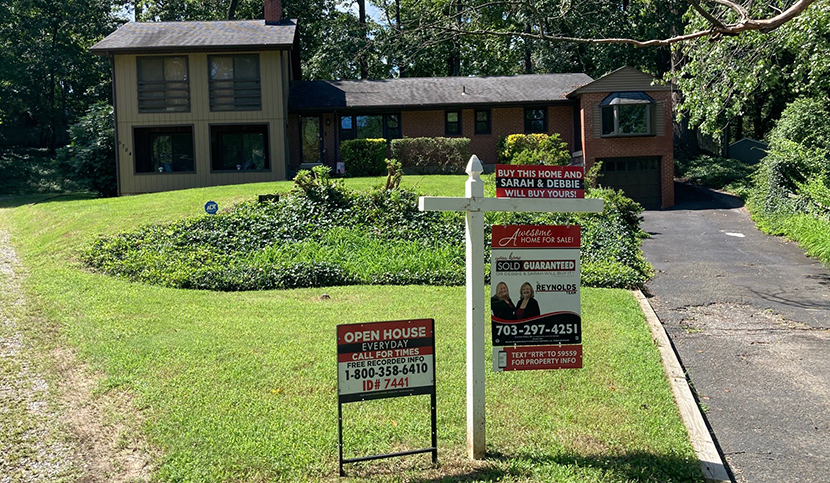
August Existing Home Sales at 14-Year High

Existing home sales reached their highest level since before the Great Recession, the National Association of Realtors reported yesterday.
NAR said total existing-home sales (https://www.nar.realtor/existing-home-sales) rose for the third consecutive month in August, improving by 2.4% from July to a seasonally adjusted annual rate of 6 million. From a year ago, sales rose by 10.5%.
Single-family home sales rose to a seasonally adjusted annual rate of 5.37 million in August, up by 1.7% from 5.28 million in July and by 11% from one year ago. The median existing single-family home price jumped to $315,000 in August, up 11.7% from a year ago. Existing condominium and co-op sales rose to a seasonally adjusted annual rate of 630,000 units in August, up 8.6% from July and 6.8% from one year ago. The median existing condo price rose to $273,300 in August, an increase of 7.8% from a year ago.
For three straight months, home sales climbed in every region compared to the previous month. Median home prices grew at double-digit rates in each of the four major regions from one year ago. In the Northeast, sales jumped by nearly 14% to an annual rate of 740,000 and improved by 5.7% from a year ago. The median price in the Northeast rose to $349,500, up 10.4% from August 2019.
Sales increased by 1.4% in the Midwest to an annual rate of 1,410,000 in August and by 9.3% from a year ago. The median price in the Midwest rose to $246,300, a 10.7% increase from a year ago. Sales in the South rose by 0.8% to 2.60 million in August and by 13% from a year ago. The median price in the South rose to $269,200, a 12.3% increase from a year ago. Sales in the West rose by 0.8% to an annual rate of 1,250,000 in August and by 9.6% increase from a year ago. The median price in the West jumped to $456,100, up 11.8% from August 2019.
“The August increase in existing home sales was further confirmation of the housing market’s V-shaped recovery and overall strength in demand,” said Joel Kan, Associate Vice President of Economic and Industry Forecasting with the Mortgage Bankers Association. “The annualized pace of sales hit the 6-million mark for the first time since 2006, as transactions delayed by the pandemic continued to catch up. August was the second consecutive month of strong year-over-year sales gains, which is noteworthy considering the declines from April through June, and sales being down 31 percent in May. Last month’s strong sales activity was consistent with MBA’s purchase applications data, which has risen annually for four straight months.
“Home sales continue to amaze, and there are plenty of buyers in the pipeline ready to enter the market,” said NAR Chief Economist Lawrence Yun. “Further gains in sales are likely for the remainder of the year, with mortgage rates hovering around 3% and with continued job recovery.”
NAR reported the median existing-home price for all housing types in August jumped to $310,600, up 11.4% from August 2019 ($278,800), as prices rose in every region. August’s national price increase marks 102 straight months of year-over-year gains.
Total housing inventory at the end of August totaled just 1.49 million units, down 0.7% from July and 18.6% from one year ago (1.83 million). Unsold inventory sits at a 3.0-month supply at the current sales pace, down from 3.1 months in July and down from the 4.0-month figure recorded in August 2019.
“It is concerning that housing inventory continued to decline last month and was over 18 percent lower than in 2019,” Kan said. “This lack of supply continues to push home-price growth higher. The 11% gain in prices is far above income growth and threatens overall affordability – especially for first-time buyers. Homebuilders continue to face constraints, including higher production costs. However, it’s clear that more inventory is needed to keep home prices from rising too quickly.”
Mark Vitner, Senior Economist with Wells Fargo Securities, Charlotte, N.C., said low inventories are clearly limiting sales of single-family homes.
“Sales appear to be held back by an extraordinary lack of inventory,” Vitner said. “The lack of inventory has contributed to a bidding war for what properties are available, sending home prices sharply higher and reducing affordability.”
Vitner noted normally sales would slow as the school year began and the football season got underway. “This year, however, buyers are still making up for lost time and face fewer seasonal diversions,” he said. “Moreover, the demand for homes is benefiting from the surge in remote working and remote schooling, which continue to drive the pursuit for usable space. Unfortunately, supply has not kept pace with demand, so bidding wars will likely continue until new home construction ramps up in a significant way and on a sustained basis.”
Yun said scarce inventory has been problematic for the past few years. “Over recent months, we have seen lumber prices surge dramatically,” he said. “This has already led to an increase in the cost of multifamily housing and an even higher increase for single-family homes.”
The report said properties typically remained on the market for 22 days in August, unchanged from July and down from 31 days in August 2019. Sixty-nine percent of homes sold in August were on the market for less than a month.
First-time buyers were responsible for 33% of sales in August, down from 34% in July 2020, but up from 31% in August 2019. Individual investors or second-home buyers purchased 14% of homes in August, a small change from July’s figure of 15% and equal to the August 2019 rate of 14%. All-cash sales accounted for 18% of transactions in August, up from 16% in July 2020 and down from 19% in August 2019.
NAR said distressed sales represented less than 1% of sales in August, unchanged from July but down from 2% a year ago.
